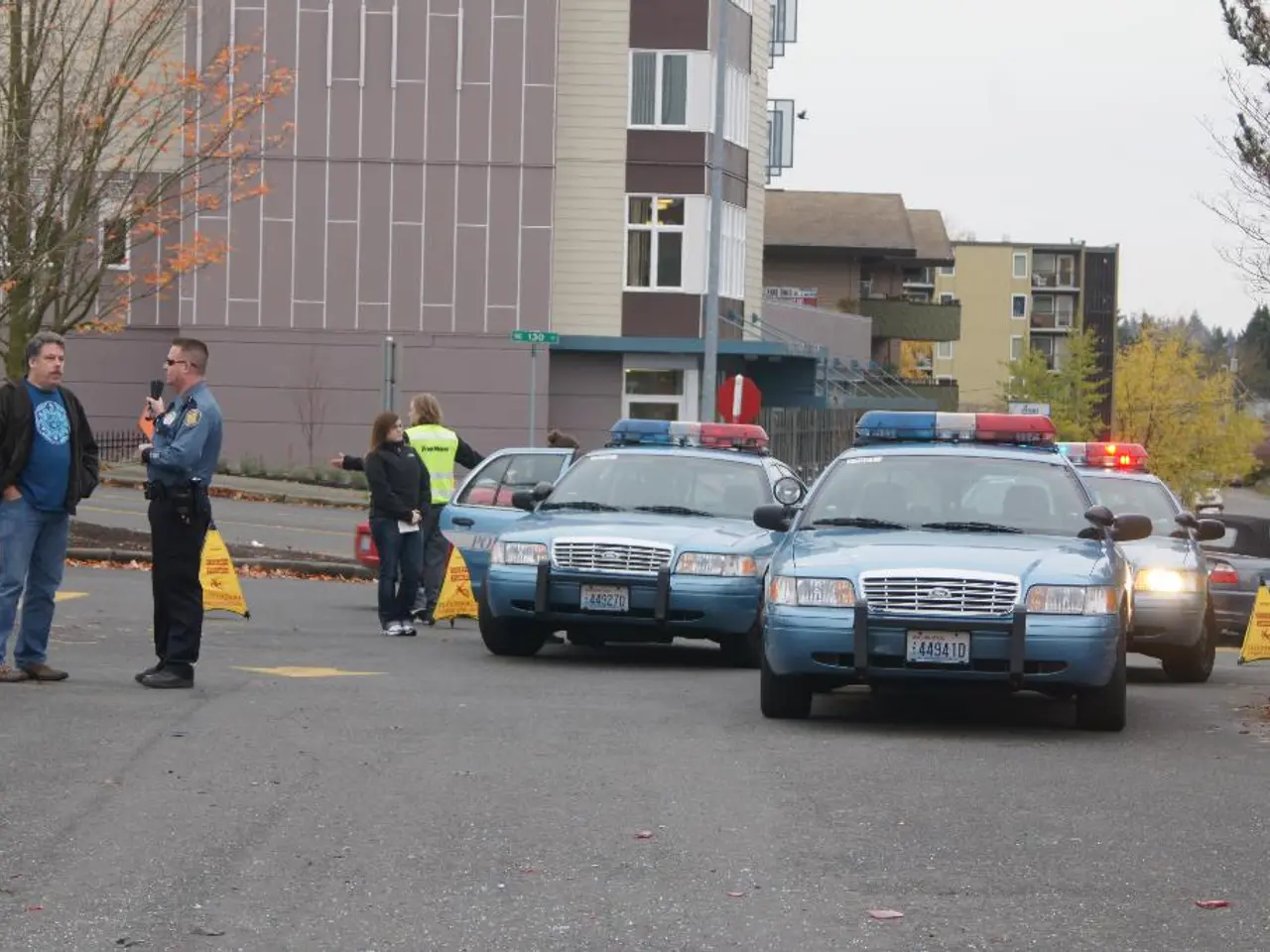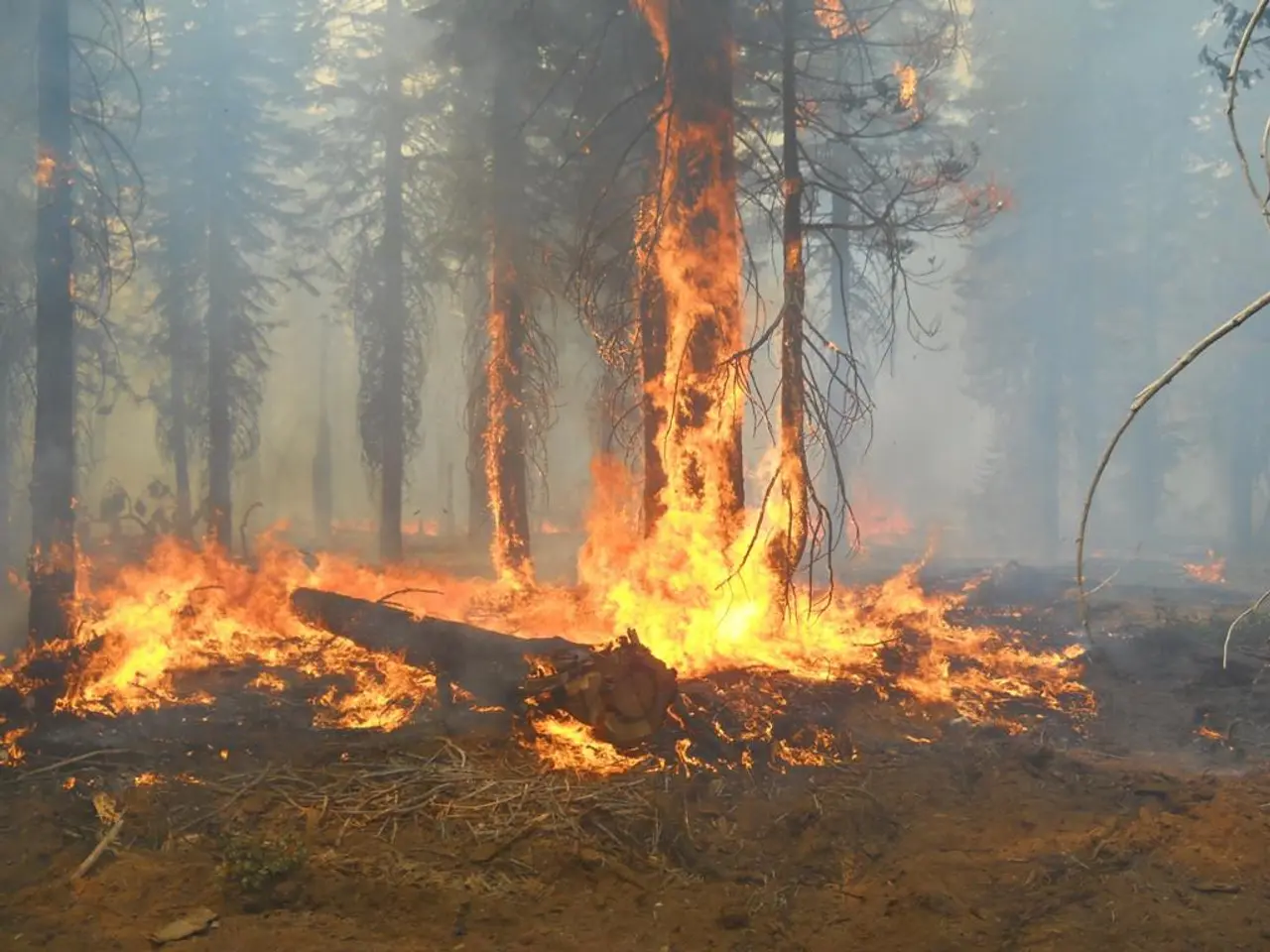Northern New Jersey experiences a magnitude 3.0 earthquake Saturday night, causing noticeable vibrations in New York City.
In the unexpected heartbeat of nature, northern New Jersey, an area not traditionally associated with seismic activity, recently experienced an earthquake. The event, which occurred near Hillsdale, NJ on August 2, served as a stark reminder for residents and neighbouring cities to adhere to standard earthquake safety protocols.
During such events, the advice remains consistent with that used in urban centres like New York City: individuals are encouraged to "Drop, Cover, and Hold On," seek shelter under sturdy furniture, avoid elevators, and follow instructions from first responders. Local officials conduct structural inspections and damage assessments, maintain communication with state agencies, and encourage residents to have emergency plans and supplies ready. Homeowners are also urged to review insurance coverage for earthquake damage, as it is not always included by default.
In response to the 2025 quake, emergency management activated software systems to facilitate public damage reporting and coordinated inspections to ensure building safety. Guidelines for public safety include dropping to the floor, taking cover under sturdy furniture, and holding on until shaking stops for those indoors. Outdoors or in a vehicle, one should move to a safe spot away from structures, bridges, and overpasses, and remain calm. After the quake, avoid elevators, use stairwells to evacuate buildings, and comply with instructions from emergency responders.
Given the geological context of the eastern U.S., where seismic waves travel farther, even modest earthquakes can be widely felt, prompting regional preparedness despite historical rarity. Emergency management plans, integrating community risk assessments and coordination among agencies, are increasingly emphasized in the tri-state area, including New York City's preparedness frameworks.
Additional preparedness recommendations include securing heavy furniture, maintaining emergency supply kits, and having a family emergency plan to ensure safety during and after earthquakes. The experience of recent events has raised awareness of seismic risks in northern New Jersey and reinforced the need for coordinated emergency response in neighbouring major cities like New York.
The earthquake struck near Hasbrouck Heights, in Bergen County. The United States Geological Survey reported an earthquake with a magnitude of 3.0 around 10:20 PM on August 2. Aftershocks sometimes occur after earthquakes, but no additional seismic activity has been reported at this time. People in New York, Westchester, and parts of Connecticut felt the tremor caused by the earthquake. No known issues affecting public services, transportation systems, traffic flow, or structural stability throughout the city have been reported to NYCEM. Operations continue as normal in the city, according to the NYC Emergency Management.
As of Sunday, August 3, at 11:00 AM, no significant damage or injuries have been reported following the August 2 earthquake. The NYC Emergency Management made this statement on X, formerly Twitter. If you find yourself outdoors during an earthquake, move to an open area away from buildings, power lines, chimneys, etc. If indoors, get under a table or desk and hold onto it (Drop, Cover, and Hold on!). Experts say earthquakes of this magnitude are not uncommon and rarely cause significant damage.
New York City Mayor Eric Adams shared a message from the USGS about what to do during an earthquake. The NYC Emergency Management reported that the event had a minimal impact. The MTA has approved the project for the BQX streetcar, which will connect 17 subway lines between Brooklyn and Queens. If you're driving during an earthquake, pull over safely and move your car as far away from traffic as possible. Do not stop on a bridge or overpass, or under trees, power lines, or signs.
In conclusion, while earthquakes of this magnitude in this region are not typically associated with significant damage, they serve as a reminder for residents and neighbouring cities to remain vigilant and prepared. Emergency management plans and public awareness are crucial components in ensuring the safety and well-being of communities in the face of natural disasters.
- Local general-news reports indicate that residents and authorities in New York City, Westchester, and parts of Connecticut also felt the aftershocks of the August 2 earthquake near Hasbrouck Heights, a reminder of the potentially far-reaching effects of such events.
- As part of emergency management plans, authorities advise people in the affected areas to prioritize staying safe during earthquakes. This includes dropping to the floor, taking cover under sturdy furniture, holding on until shaking stops, and moving to an open area away from buildings if outdoors.








